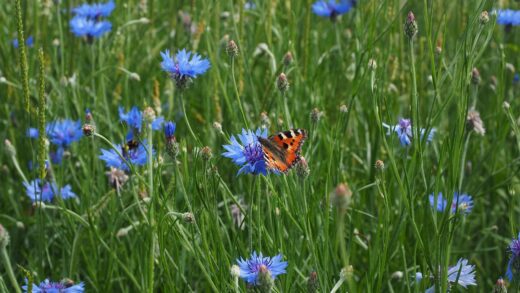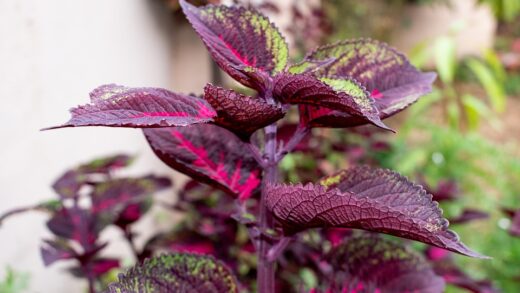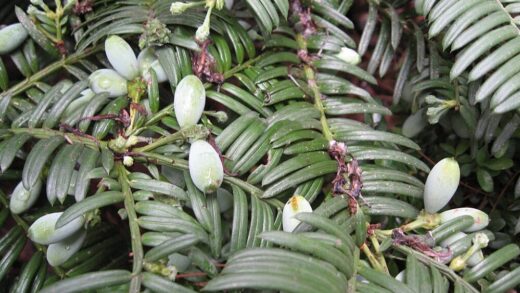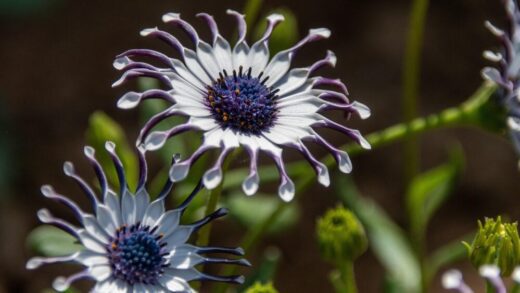Successfully establishing peppermint in your garden begins with a solid understanding of its preferred planting conditions and its various methods of propagation. This aromatic herb is famously easy to grow, but taking the right steps during the initial planting phase will set the stage for a healthy, productive, and well-contained plant. Whether you are starting with a small plant from a nursery, a cutting from a friend, or attempting to propagate it yourself, the process is straightforward and highly rewarding. The key is to provide the right environment and to be mindful of its aggressive spreading nature from the very beginning.
Before you even place a plant in the ground or a pot, proper preparation of the planting site is crucial for its future success. Peppermint thrives in soil that is consistently moist and rich in organic matter, so amending your chosen spot is a beneficial first step. Work a few inches of well-rotted compost or manure into the top six to eight inches of soil. This not only provides essential nutrients but also improves the soil’s ability to retain moisture, which is vital for this thirsty herb. It is also important to choose a location that receives full morning sun with some partial shade in the afternoon, especially in hotter climates, to prevent the leaves from scorching.
When you are ready to plant a nursery-grown seedling, dig a hole that is roughly twice the width of the root ball and just as deep. Gently remove the plant from its container, being careful not to damage the roots, and place it in the center of the hole. The top of the root ball should be level with the surrounding soil surface. Backfill the hole with the amended soil, lightly tamping it down around the base of the plant to remove any air pockets. Water the plant thoroughly immediately after planting to help settle the soil and reduce transplant shock.
One of the most important considerations when planting peppermint directly into a garden bed is containment. Due to its aggressive spreading habit via underground runners, or stolons, it can quickly become invasive if not controlled. To prevent this, many gardeners choose to plant peppermint in containers. Alternatively, you can sink a bottomless pot or a plastic root barrier into the ground, ensuring it extends at least a foot deep and has a small lip above the soil level. This physical barrier will effectively corral the runners and keep your mint patch from taking over the garden.
Choosing the right starting material
The journey of growing peppermint can begin in several ways, and your choice of starting material can influence the initial stages of cultivation. The most common and reliable method is to purchase a small, established plant from a nursery or garden center. This approach is ideal for beginners as it bypasses the more delicate stages of germination and rooting, providing you with a healthy plant that is ready for transplanting. When selecting a plant, look for one with vibrant green leaves, no signs of pests or disease, and a well-developed root system.
More articles on this topic
Another excellent method is to start with a cutting or a division from an existing, healthy peppermint plant. This is a form of vegetative propagation, which ensures that the new plant will be genetically identical to the parent, preserving its specific flavor and growth characteristics. If you have a friend with a thriving mint patch, they will likely be happy to share a division, which is simply a piece of the root ball with some stems attached. Cuttings, which are sections of stem rooted in water or soil, are also very easy to start and grow into new plants quickly.
Starting peppermint from seed is a less common and often less reliable method. Peppermint is a sterile hybrid, meaning the seeds it produces are often not viable or will not grow true to the parent plant. The resulting seedlings may exhibit different characteristics, potentially lacking the classic strong, minty flavor you expect. If you do choose to grow from seed, be aware that the process requires more patience and the outcome can be variable. For a guaranteed classic peppermint plant, propagation from cuttings or divisions is the far superior choice.
Regardless of the starting material you choose, ensuring its health is paramount. A healthy start leads to a robust and productive plant. Inspect any potential plant, cutting, or division for signs of common mint problems like rust, which appears as orange spots on the undersides of leaves, or pests like spider mites. Starting with clean, vigorous material saves you the trouble of dealing with these issues later on and gives your new peppermint plant the best possible chance to thrive in its new home.
Propagation through runners and divisions
One of the easiest and most natural ways to propagate peppermint is by utilizing its own growth habit through runners, also known as stolons. These are the horizontal stems that the plant sends out, either just above or just below the soil surface, which readily form new roots and shoots at their nodes. To propagate using this method, simply identify a healthy runner that has already started to develop some small roots where it touches the soil. You can then carefully sever the runner from the parent plant using a clean, sharp knife or shears.
More articles on this topic
Once you have separated the runner, you can gently dig it up, ensuring you keep the newly formed roots intact. This new, small plant can then be transplanted directly into a prepared pot or another location in your garden. Water it well after planting to help it establish itself in its new environment. This method is incredibly effective because you are essentially transplanting a small, already-rooted plant, which significantly reduces the risk of failure. This process can be done at any time during the growing season, but it is often most successful in the spring or early summer.
A similar and equally effective method is propagation by division, which is particularly useful for mature, established peppermint plants. This is best done in the spring every two to three years to rejuvenate an older plant. The process involves carefully digging up the entire root ball of the plant. Once it is out of the ground, you can use a sharp spade or a garden knife to cut the root mass into several smaller sections. Make sure that each new division has a healthy clump of roots and at least a few healthy stems or new shoots.
These divisions can then be replanted immediately into new pots or different areas of thegarden. This method not only provides you with multiple new plants but also helps to manage the size of the original patch and invigorates its growth, preventing the center from dying out. After replanting the divisions, trim back some of the top growth to reduce the stress on the newly establishing root system and water them thoroughly. This is an efficient way to quickly multiply your peppermint stock with very little effort.
Propagation by cuttings
Propagating peppermint from stem cuttings is an incredibly simple and reliable technique that allows you to create numerous new plants from a single parent. This method is best performed during the spring or summer when the plant is in a state of active growth. Start by selecting a healthy, vigorous stem from the parent plant that is free from any signs of disease or pest damage. You are looking for a stem that is relatively young and supple, not old and woody, as these will root much more readily.
Using a clean, sharp pair of scissors or a knife, take a cutting that is about four to six inches long. Make your cut just below a leaf node, which is the point on the stem where a pair of leaves grows. Carefully remove the leaves from the bottom two inches of the cutting, as this is the portion that will be submerged in water or planted in soil, and leaving the leaves on could cause them to rot. You should have at least two or three sets of leaves remaining at the top of the cutting to facilitate photosynthesis.
There are two primary ways to root your cuttings: in water or directly in a growing medium. The water method is popular because you can visually track the progress of root development. Simply place the prepared cutting in a jar or glass of water, ensuring the stripped nodes are submerged but the remaining leaves are above the waterline. Place the jar in a location with bright, indirect light. You should begin to see small white roots emerging from the nodes within a week or two. Once the roots are about an an inch or two long, the cutting is ready to be transplanted into soil.
Alternatively, you can plant the cutting directly into a pot filled with a moist rooting medium, such as a mix of potting soil, perlite, or vermiculite. You can dip the bottom end of the cutting in a rooting hormone to encourage faster root development, though this is often not necessary for mint as it roots so easily. Insert the cutting into the medium, ensuring the stripped nodes are buried. Keep the medium consistently moist and in a bright, indirectly lit spot. New leaf growth is a good indication that the cutting has successfully developed a root system and is ready to be treated as a new plant.
Starting peppermint from seed
While vegetative propagation methods like cuttings and divisions are the most common and recommended ways to grow peppermint, it is also possible to start it from seed. However, it is crucial for gardeners to understand the potential drawbacks of this method. Peppermint is a sterile hybrid of watermint and spearmint, which means that the seeds it produces do not always grow “true to type.” This means the resulting plants may not have the same characteristic strong, pungent flavor and aroma as the parent plant, often reverting to traits of one of its ancestors.
If you decide to proceed with growing from seed, you should start them indoors about eight to ten weeks before the last expected frost date in your area. Use a seed starting tray or small pots filled with a high-quality, sterile seed-starting mix. Sow the seeds on the surface of the soil and press them down gently, but do not cover them with soil, as mint seeds require light to germinate. Lightly mist the surface with water to moisten the mix without dislodging the tiny seeds.
To create a humid environment that aids germination, you can cover the tray or pots with a clear plastic dome or plastic wrap. Place the container in a warm location that receives plenty of bright, indirect light. Germination can be erratic and may take anywhere from ten to twenty days. During this time, it is important to keep the soil consistently moist but not waterlogged. You can do this by misting the surface regularly or by watering from the bottom to avoid disturbing the seeds.
Once the seedlings have emerged and developed their first set of true leaves, you can remove the plastic cover to improve air circulation. When the seedlings are a few inches tall and have several sets of leaves, they can be transplanted into larger individual pots. Continue to grow them indoors until all danger of frost has passed and they are well-established. Before moving them to their final location outdoors, be sure to harden them off by gradually exposing them to outdoor conditions over the course of a week.


















